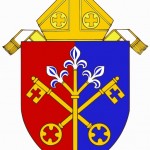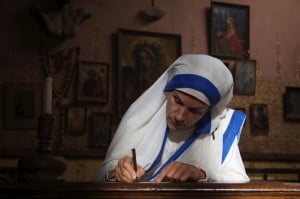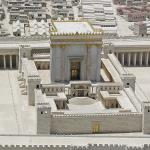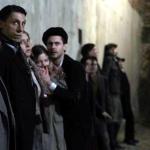This week, the Vatican’s Congregation for the Doctrine of the Faith sent a letter instructing U.S. bishops not to permit appearances of the Medjugorje visionaries in their churches unless and until the apparitions are ruled to be authentic.
The news sparked a firestorm of commentary, of both the “I-told-you-so” variety and the “Oh-no-they’re-wrong” variety.
Given all the excitement in the blogosphere, I thought I’d share my personal report of an experience I had a dozen or so years ago, when I attended two of the unapproved “apparitions” in churches right here in the United States. I told this story long ago–over a year ago, in fact. Perhaps in this tense time, it bears repeating.
* * * * *
In recent days there have been many harsh words written about the alleged Marian apparitions at Medjugorje.
Howard Kainz, Marquette University professor emeritus, wrote a critical article published June 29 in Crisis Magazine about an invitation he received to attend five apparitions with Medjugorje visionary Marija Pavlovic Lunetti. The apparitions are slated to occur at the 2012 gathering at the Tabernacle of our Lady’s Messages at Caritas, in Birmingham, Alabama, between July 1 and 5.
Kainz reported that
“…the Caritas group, however, is considered schismatic by the visionaries and priests at the pilgrimage center, in a part of what used to be Yugoslavia. On the “official” Medjugorje website we are warned that Caritas of Birmingham is a cult, something like a religious business, not approved…. But one of the visionaries, Marija, still comes regularly to Caritas in Birmingham, contributing to a local, in-house schism of an international cult that bespeaks a larger and ongoing schism with orthodox Catholicism.”
Kainz goes on to call the anticipated apparitions at Caritas “not just heterodox, but heretical.”
“Jesus told us to judge trees by their ‘fruits’,” Kainz finishes. “In Medjugorje, numerous conversions have been reported, Catholics returning to the sacraments after many years, etc. But the main fruit, and the fruit closest to the heart of the devil, has been disobedience.”
Kainz’ article has been widely linked and reprinted: on Deacon Greg Kandra’s blog, on Al Kresta’s blog, on New Advent and Pewsitter and more.
Mark Shea has pulled no punches in condemning the apparitions. He writes,
Medj is a fraud. Those who believe in it had been start asking themselves now whether they are going to trust the Church or this fake “vision” when Rome finds–as it will–that the local ordinaries are right to say that nothing supernatural is occurring there.
There are, indeed, reasons to proceed with extreme caution:
- The local ordinary, Bishop Ratko Perić, bishop of Mostar, believes the apparitions to be untrue, explaining, “The numerous absurd messages, lies, falsehoods and disobedience associated from the beginning with the events and “apparitions” of Medjugorje, all refute every claim of authenticity.”
- In July 2009 Father Tomislav Vlasic, who played a prominent role in promoting and publicizing of the apparitions, was defrocked by Pope Benedict XVI, following accusations of sexual misconduct, and accusations of exaggeration or fabrication of the visions.
- The apparitions which began in June 1981 have been irregular: The visionary Marija Lunetti (Pavlović), one of the six visionaries who claim to see the Virgin Mary at Medjugorje, receives messages on the twenty-fifth of every month, while Mirjana Soldo (Dragičević) reports that she receives messages on the second of the month. Others have now received all of the “secrets” and so do not see the Virgin regularly.
- Unlike many other Marian apparitions, the apparitions to Medjugorje’s six visionaries do not always occur at the same location. So it is that Ivan Dragicevic could travel in the United States, experiencing an apparition at the appointed time but in a different chapel.
Yet there are reasons to hope that the “Gospa” (Croatian for “The Lady”) may, indeed, be offering her blessing and her wisdom to the world, even in this age.
For one thing, Mary’s messages, some claim, are clearly consistent with her messages at Fatima or at other “approved” apparitions. Her purpose is to call people to prayer, and to point them toward her son Jesus.
Many of the 30 million pilgrims who have traveled to Medjugorje, in the scenic mountain region of Mostar, have reported unusual visual phenomena. They claim to have seen the sun spinning in the sky or changing colors. Some visitors have seen figures around the sun, such as a ring of crosses. Some have claimed that their rosaries, brass or worn before the visit, turned to shiny gold in the blazing sun during an apparition.
The visionaries attest to the effect that the apparitions have had in their own lives. Said Ivan Dragicevic,
“The apparitions have made a big difference in my life – the difference between heaven and earth. For example, I arrange my day now so that even during the day I find time to pray. Before, my life had no meaning. Now, I’m filled with inner contentment. The first time I saw Our Lady, a change occurred in my soul, and in my heart. Before, I often avoided prayer, but now the difference is so great, I really can’t describe it. I’m confident and not afraid, because I know who leads me, and therefore, I’m not afraid of death. People in our parish, and all people, should feel that way.”
CONFUSED? The answer is coming. The Holy See, after receiving many reports, both positive and negative, announced in March 2010 that the Congregation for the Doctrine of the Faith had convened an investigative commission to study the phenomenon. Under the leadership of Cardinal Camillo Ruini, this body of bishops, theologians, and other experts is expected to report any findings to the CDF, which will then judge whether the apparitions are worthy of belief.
* * * * *
AND ME? I thought I would pop in here and offer some observations of my own, based on my very limited personal experience. I was in attendance at two alleged apparitions about a decade ago—not in Bosnia-Herzegovina, but right here in the U.S., in New Orleans.
BUT FIRST, I thought I would remind you that it doesn’t really matter what I think. Eventually, after long and careful investigation, the Catholic Church will rule on whether this particular spiritual phenomena is “worthy of belief.” When that happens, I will follow the clear teaching of the Church.
AND SECOND, I thought I would remind you that even if the Church approves the apparitions (which Mark Shea deems an impossibility), you are under no obligation to believe them or to follow them or to read about them or to change your behavior or your devotional life because of them. The Catechism of the Catholic Church (section 67) explain it thus:
That’s because the Church teaches that the “deposit of faith”—the full teaching as relayed by Christ through His Apostles, has been remitted 2,000 years ago, and will not change. Nothing can be added or subtracted. Our understanding of Truth may deepen with a new experience; or it may be expressed in a different way through the words of a contemporary theologian.
Throughout the ages, there have been so-called “private” revelations, some of which have been recognized by the authority of the Church. They do not belong, however, to the deposit of faith. It is not their role to improve or complete Christ’s definitive Revelation, but to help live more fully by it in a certain period of history. Guided by the Magisterium of the Church, the sensus fidelium knows how to discern and welcome in these revelations whatever constitutes an authentic call of Christ or his saints to the Church.
Christian faith cannot accept “revelations” that claim to surpass or correct the Revelation of which Christ is the fulfillment, as is the case in certain non-Christian religions and also in certain recent sects which base themselves on such “revelations.”
* * * * *
MY ENCOUNTER

Ivan Dragicevic
I was planning a conference in New Orleans, and was doing a site visit in the “Big Easy” when I received a most unique invitation:
Would I like to attend a Mass with Ivan Dragicevic, one of the Medjugorje visionaries?
I was happy to accept; in fact, since my visit to the city (and Ivan’s) continued, I was privileged to be present for not just one, but two apparitions. This is my report.
On the first evening, Ivan sat in the front pew of the packed church, the guest of honor for a private organization’s dinner. He did not speak; but after Mass, a prie-dieu was brought forth and placed before the altar. Ivan came forward and knelt at the prie-dieu.
For a few minutes, nothing happened. We sang a few hymns, said a few prayers. Then, Ivan’s countenance changed. He looked ahead, upward, enthusiastically. For perhaps ten minutes, as the congregation knelt in silence, Ivan listened and whispered to the unseen visitor.
When it was over, Ivan crossed himself, then walked over to a microphone where he recounted the Virgin’s message for all to hear. She had asked for a recommitment to prayer and fasting, talked about her Son’s love for His people. She spoke kindly, warmly, like a doting mother encouraging her children. It was too long ago, and I can no longer repeat entire sentences; but I was drawn at the time back to my childhood, back to a dog-eared book I’d owned (and read often) on “Our Lady of Fatima”—a monthly feature from the Catholic Youth Book Club. It was as though I was hearing those messages which I’d read so often, now voiced by Ivan.
The following day, I was again invited to attend the apparition. This time, the group was much smaller and we had Mass in a small chapel adjacent to the parish church. We—perhaps 30 men, women and children—sat crowded in a circle in the small worship space, pushed together onto benches, chairs, steps. Some were only a few feet from the altar where Mass was celebrated.
After Mass, again Ivan came forward. Again we waited in silence and prayer—this time for a little longer, almost fifteen minutes. And then she came.
Ivan’s countenance softened, and he began praying, talking, especially listening. The room was hushed as we gazed upon Ivan, and Ivan gazed upon the woman.
Again, when it was over, Ivan stood and repeated the Gospa’s message. This time, he said, she had been accompanied by the Archangel Michael. As Ivan pointed to where the armed angel had stood, I saw only furniture, a wall, even a person in the space. Clearly, St. Michael was not troubled by the narrow quarters.
As before, the message was full of love—no, LOVE, all in capitals, love outreaching and overflowing and covering us all. And it was full of joy. And hope. And encouragement. And most of all, the LOVE.
MY REFLECTION? The master apologist C.S. Lewis, in his radio talk, presents what has been called the “Trilemma”: the trifurcate phrase “Liar, Lunatic, or Lord.” Lewis calls on his listeners (or readers) to make a decision about Christ: Which of these was He? Lewis’ argument is that Jesus claimed to be God; and if Jesus made such a preposterous claim, then one of three things was true:
- Jesus was a Liar—lying about His identity (which is morally reprehensible); or
- Jesus was deluded into believing that He was God, which would make him a raving madman (whom nobody would respect as a teacher). If that were the case, He couldn’t have been a great moral teacher. Or,
- Jesus is what He says He is: Jesus is Lord. This is the only satisfying answer.
I found myself asking the same question that day, listening to Ivan.
I was convinced beyond measure that Ivan was not a liar. He did not have the flim-flam smoothness of a magician; rather, he was low-key and direct. He may have been wrong, I reasoned; but I watched, I sensed, and I could not believe he was lying. No, Ivan truly believed the story he was telling us, believed it more than I believed the sky was blue. He was not a liar.
A second part of that “liar” question concerns financial impropriety. I believe that Ivan did not benefit financially from his claim. He supported his family, to be sure; but the largesse of the faith community gathered there was directed toward building a church, a shrine, a medical clinic at Medjugorje, and not toward Ivan himself.
Ivan was not a madman. I watched as he blessed a small child, as he touched the shoulder of an older woman. He’d never met them, yet he LOVED them with the love of Christ. I’ve had that feeling, of being in the presence of a saint, a truly holy person, before in my lifetime—but not often. He shook our hands, each of us, and although we just met, he loved me and he made me love him.
The last question doesn’t exactly apply. Ivan is not Lord, nor does he claim to be. What he claimed, though—that by some unimagined grace, he’d been chosen to bear a message from the heavenly realm—seemed the only logical answer to the searing question we all asked.
Do I believe in Medjugorje? I await Rome’s ruling; but I stand much closer to the “Yes” pole in the continuum than Howard Kainz, closer than Mark Shea, because of the things I saw and heard that week in New Orleans.
















